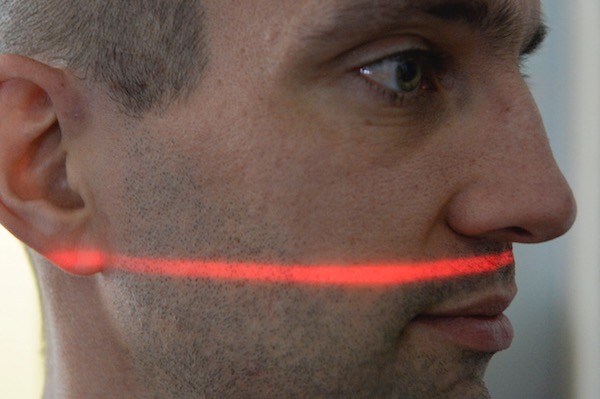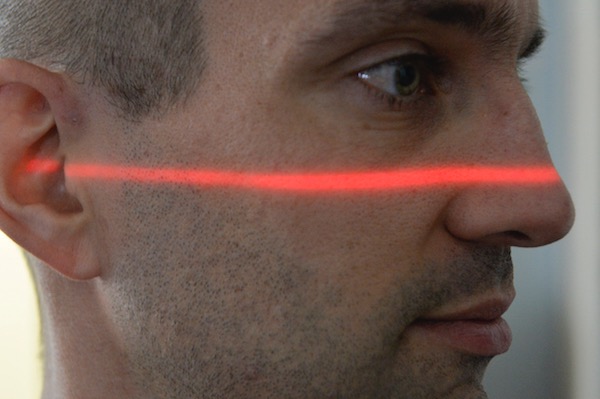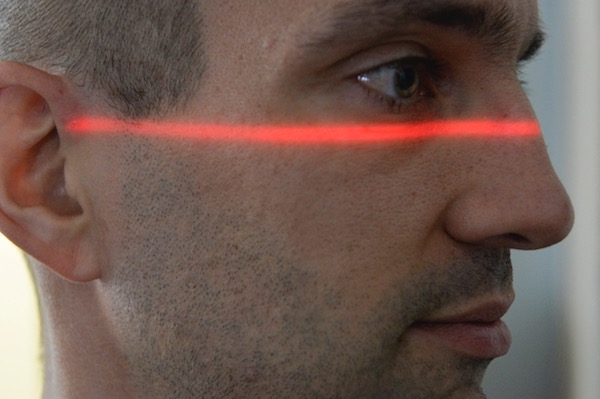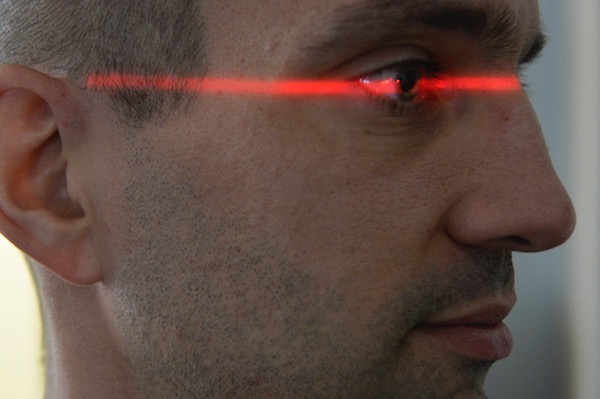Probieren hilft beim Studieren!
Interaktive Vorlesungsfolien im Webbrowser
Prof. Dr. Mario Botsch
Lehrstuhl für Computergraphik, TU Dortmund
Test
Anleitung für die HTML-Folien
- Cursor-links/Cursor-rechts blättern durch Folien.
- f/ESC schalten Fullscreen-Modus an/aus.
- Ctrl/Cmd-f öffnet Such-Dialog, ESC schließt ihn wieder.
- (links oben) öffnet das Navigationsmenü.
- (links unten) schaltet das virtuelle Whiteboard an/aus.
- (rechts oben) spielt aufgezeichnetes Erklärvideo (wenn vorhanden) ab.
- (rechts oben) öffnet das Frage-Panel, wo Fragen pro Folie submitted werden können.
- (recht oben im Demo-Fenster) bringt Demo-Apps in den Fullscreen-Modus.
- Doppelklick auf ein Element (z.B. ein Bild) für Rein-/Raus-Zoomen.
- Wenn der untere Rand blinkt: Zum virtuellen Whiteboard runter-scrollen.
Videoaufzeichnungen
- Erklärvideos abspielen:
- Video springt automatisch an die Stelle, wo die aktuelle Folie erklärt wird.
- Cursor-links/Cursor-rechts springt im Video folien-weise vor/zurück.
- Space oder Maus-Klick pausiert das Video.
- Abspielgeschwindigkeit lässt sich einstellen (von halber bis zu doppelter Geschwindigkeit).
- Beenden des Videos springt automatisch auf die zuletzt erklärte Folie.
- Erklärvideos aufnehmen:
- Videos können direkt in den HTML-Folien aufgenommen werden.
- Bildschirm, Kamera und Mikrophon werden aufgezeichnet.
- Videos werden automatisch mit Folien synchronisiert.
Features der HTML-Folien
Bilder und Videos

Hier ist ein Bild im Fullscreen-Modus als Sub-Slide
Hier ist ein Video im Fullscreen-Modus als Sub-Slide
Aufzählungen
- Mario
- Der Held
- Peach
- Die Prinzessin
- Donkey Kong
- Der Böse
 Mario
Mario  Peach
Peach  Donkey Kong
Donkey Kong
Textauszeichnungen
- Mario
- ist fett (gedruckt)
- Prinzessin Peach
- ist hochgestellt
- Donkey Kong
- ist schräg
 Mario
Mario  Peach
Peach  Donkey Kong
Donkey Kong
Nummerierungen
- Donkey Kong
- entführt Peach
- Mario
- rettet Peach
- Peach
- findet Mario toll

Task-Listen
- Was können wir?
- Mathe
- Informatik
- alles andere
- Stärken/Schwächen?
- Mathe
- Informatik
- alles andere
- Was ist cool?
- Mathe
- Informatik
- alles andere
- Wer braucht mehr 💰?
- Mathe
- Informatik
- alle anderen
Mathe-Formeln mit MathJax
- Navier-Stokes-Gleichungen \[\begin{eqnarray} \dot{\vec{u}} &=& \fragment{-\vec{u}\cdot\grad\vec{u}} \fragment{\;-\; \frac{1}{\rho}\grad p} \fragment{\;+\; \nu \laplace \vec{u}} \fragment{\;+\; \vec{f}} \label{eq:momentum} \\[2mm] \grad \cdot \vec{u} &=& 0 \label{eq:incompressibility} \end{eqnarray}\]
- Formeln können schrittweise eingeblendet werden
- Formeln können referenziert und verlinkt werden
(siehe nächste Folie)
Virtuelle Tafel
- Herleitungen an der Tafel sind nicht in Videoaufzeichnung
- Herleitungen auf den Folien sind zu schnell \[ \begin{eqnarray*} a &=& b \\ a^2 &=& ab \\ 2a^2 &=& a^2 + ab \\ 2a^2-2ab &=& a^2 - ab \\ 2a(a-b) &=& a (a-b) \\ 2a &=& a \\ 2 &=& 1 \end{eqnarray*} \]
- Die virtuelle Tafel ist ein guter Kompromiss 👍
Hier der Link auf Navier-Stokes-Gleichungen: \(\eqref{eq:momentum}\).
Webseiten
Tabellen
| Powerpoint | LaTeX-Beamer | HTML-Folien | |
|---|---|---|---|
| plattformunabhängig | 😢 | 😊 | 😊 |
| Mathe-Formelsatz | 😢 | 😊 | 😊 |
| Videos | 😊 | 😢 | 😊 |
| Export für Studierende | 😢 | 😢 | 😍 |
| erweiterbar | 😢 | 😢 | 😍 |
| interaktiv | 😢 | 😢 | 😍 |
| Aufwand | 😊 | 😢 | 😭 |
Bibliographie mit BibTeX
- Bibliographie kann mit BibTeX verwaltet werden.
- Die Referenzliste wird dann automatisch erstellt (siehe nächste Folie).
- Zitationsstil über CSL (Citation Style Language) einstellbar.
- Hier ein Beispiel:
- Realistische Avatare sind toll (Waltemate u. a. 2018).
- Achenbach u. a. (2017) können sie in <10 Minuten erzeugen.
- Sie können in Echtzeit animiert werden (Komaritzan und Botsch 2019).
Referenzen
PDF-Unterstützung
- Folien lassen sich auf Knopfdruck als PDF-Dokument exportieren.
- PDF-Dokumente lassen sich in Präsentationen einbinden.
Statische und dynamische Visualisierungen
Bild-Sequenzen




Animierte Vektorgrafiken
Interaktive Charts mit chart.js
1.0, 1.3, 1.7, 2.0, 2.3, 2.7, 3.0, 3.3, 3.7, 4.0, 5.0
Irgendwelche Zahlen, 5, 6, 5, 2, 3, 3, 4, 3, 3, 5, 11
Andere Zahlen, 11, 8, 5, 5, 2, 7, 4, 1, 5, 0, 15Interaktive Charts mit chart.js
1.0, 1.3, 1.7, 2.0, 2.3, 2.7, 3.0, 3.3, 3.7, 4.0, 5.0
Irgendwelche Zahlen, 5, 6, 5, 2, 3, 3, 4, 3, 3, 5, 11Interaktive Charts mit chart.js
100k, 200k, 300k, 400k, 500k
Conjugate Gradients, 3.19, 11.6, 23.6, 37.3, 47.4
Sparse Cholesky, 0.21, 0.52, 0.83, 1.21, 1.54Graph-Diagramme mit GraphViz
Diagramme mit Tikz/Latex
Plots mit gnuplot
3D-Modelle
Rendered with Polygon Mesh Processing Library
Noch mehr 3D-Modelle
Rendered with model-viewer, model from here
Interaktive Demos
Interaktive Demos in Javascript
Interaktive Demos mit D3.js
Komplexere Demos in C++
Interaktive Mathe mit Geogebra
Interaktive Mathe mit SAGE
Wir definieren ein paar Punkte \(\mathbf{x}_1, \dots, \mathbf{x}_6\) und verbinden sie zu einem Linienzug:
points = matrix([ [0,0], [1,1], [2,-1], [3,0], [2.5,0.5], [3,1] ])
pointsPlot = plot(line(points, color="red", aspect_ratio=1))
show(pointsPlot)Jetzt interpolieren wir die Punkte \(\mathbf{x}_1, \dots, \mathbf{x}_n\) mit einem Polynom vom Grad \(n-1\). Testen Sie verschiedene Werte für \(n \in \{2, \dots, 6 \}\). Was fällt auf?
# select n points
n = 6
B = points.submatrix(0,0,n,2)
# define matrix for polynomial interpolation
A = matrix(n, n, lambda i,j: i^j)
# solve A*X=B, then X contains the poly coefficients
X = A\B
# define function for evaluating polynomial
var('k, coeffs, t')
def curve(coeffs, t):
return sum(coeffs[k] * t^k for k in [0..n-1])
# finally, plot fitted curves and point set
curvePlot = parametric_plot(curve(X,t), (t, 0, n-1))
show(pointsPlot + curvePlot)Interaktives Python
from math import exp,pi,cos,sin
import matplotlib.pyplot as plt
import numpy as np
x0=1; t0=0; tf=25; x=x0; t=t0;
h = pi/16
X=[]
T=[]
while t < tf:
X.append(x)
T.append(t)
x = x + h*(-x*cos(t));
t = t+h
plt.plot(T,X,'b*--')
T1=np.linspace(t0,tf,200);
plt.plot(T1,[exp(-sin(t)) for t in T1],'r-')
plt.title('h = %f' % (h))
plt.legend(('Numerical solution','Exact solution'),loc='upper left')
plt.show()Example from Roberto De Leo, Howard University
Interaktive Statistik mit R
Die Trainingsdaten bestehen aus Alter und Maximalpuls als \(x\)- und \(y\)-Koordinaten.
x = c(18,23,25,35,65,54,34,56,72,19,23,42,18,39,37) # ages of individuals
y = c(202,186,187,180,156,169,174,172,153,199,193,174,198,183,178) # maximum heart rate of each one
plot(x,y) # make a plotWir fitten jetzt eine Gerade durch lineare Regression:
plot(x,y) # make a plot
lm(y ~ x) # do the linear regression
abline(lm(y ~ x)) # plot the regression lineQuizzes und Selbstlernphase
Audience Response System
Wer bekommt am Ende die Prinzessin? 
- Donkey Kong

- Nein, der ist böse!
- Sponge Bob

- Nein, der lebt unter Wasser!
- Kleine A-Loch

- Nein, den mag keiner!
- Supermario

- Klar!
Zuordnungsaufgaben



Zuordnungsaufgaben
Freitextaufgaben
 Wie heißt die Prinzessin?
Wie heißt die Prinzessin?
-
Peach
-
Lilifee



Die Prinzessin ist verliebt in
-
Donkey Kong
-
Supermario
-
Sponge Bob
Fragensammlung
- Mit dem Icon (oben rechts) können Studierende pro Folie anonym Fragen posten.
- Die Fragen sind für alle Vorlesungsteilnehmer*innen sichtbar und können dann z.B. in einer Online-Fragestunde besprochen werden.
- Fragen können von Lehrenden als erledigt markiert oder gelöscht werden.
- Im Menu (Icon oben links) werden die Fragen in der Folienübersicht auch angezeigt.
Folienerstellung
Von Markdown zu HTML
Open-Source “Zutatenliste”
- Reveal.js
- Javascript-Framework zur Darstellung von Folien im Webbrowser
- Pandoc
- Tool/Bibliothek zur Konvertierung von Markdown in Reveal.js-Folien.
- decker
deckerbasiert aufpandocund übersetzt Markdown in HTML-Folien.- Es erweitert
pandocundreveal.jsum zusätzliche Filter und Plugins. - Wird entwickelt von Prof. Henrik Tramberend (Beuth Hochschule Berlin), Prof. Mario Botsch (TU Dortmund) und Prof. Marc Latoschik & Team (Uni Würzburg).
- Wird verwendet an Uni Würzburg, Beuth Hochschule Berlin, TU Dortmund, Uni Osnabrück, Uni Magdeburg, Uni Bern und EPFL.